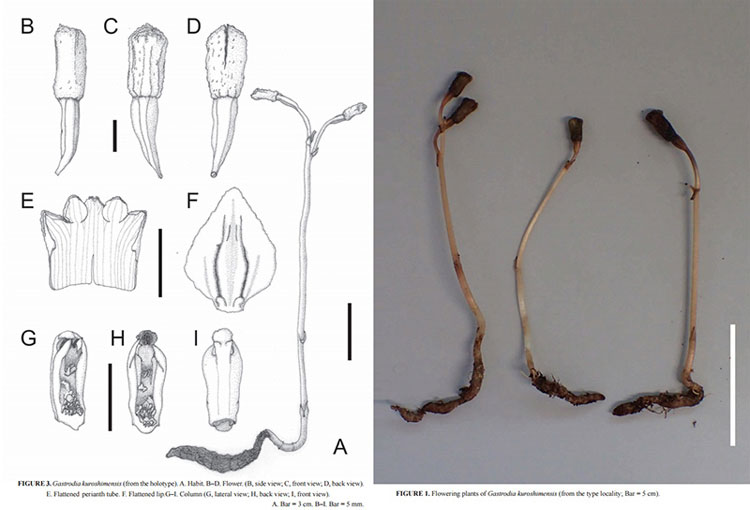Plants do not photosynthesize, do not bloom
Prof. Kenji Suetsugu - Kobe University (Japan) - has discovered a strange new plant species on Kuroshima Island, Okinawa. This plant called gastrodia kuroshimensis does not need photosynthesis to sustain life and development, it relies on the host mushroom and produces flowers but never blooms.
Plants without photosynthesis have long attracted the attention of researchers. However, there is very little information about these species because there are not many opportunities for observation. They are small, rare, difficult to detect because they often thrive in dark areas in the forest, appearing only on the ground during flowering and fruiting periods.

The newly discovered gastrodia kuroshimensis plant.(Photo: BP).
In April 2016, Mr. Suetsugu accidentally discovered about one hundred plants without photosynthesis. He collected samples, checked the details and confirmed that this is a new species. Unexpectedly, the species that Mr. Suetsugu discovered was unique because they completely pollinated themselves.
The evolution of self-pollinated plants is also a mystery for researchers because they still produce reproductive organs or agencies involved in cross-pollination.
However, self-pollinated plant flowers ensure a better reproductive process because they can release seeds even in less-than-ideal environmental conditions. In addition, they can adapt to local habitats by eliminating harmful gene variants.
Along with other researchers, Suetsugu also discovered a new non-photosynthetic species on Yakushima island in Kagoshima in February 2016, named sciaphila yakushimensis .
The findings are published in the journal Phytotaxa.
- Non-photosynthetic plants discovered after 150 years
- Unusual flowers bloom on sand like alien flowers
- The way the flowers know it is time to hatch
- Tea plants bloom after 200 years
- Century trees rarely bloom
- How to make peach blossom bloom right Tet
- The 'head-only robot' knows how to find light to photosynthesize, signaling when the plant is thirsty
- Plants bloom only once in their lives
- When lilac flowers bloom
- Experience for the right apricot blossom for Tet
- Helmets can fold Bloom
- Scavenger flowers are about to bloom in America
 Why do potatoes have eyes?
Why do potatoes have eyes? 'Tragedy' the world's largest carnivorous life: Death becomes ... public toilet
'Tragedy' the world's largest carnivorous life: Death becomes ... public toilet Tomatoes were once considered 'poisonous' for 200 years
Tomatoes were once considered 'poisonous' for 200 years Detecting microscopic parasites on human face
Detecting microscopic parasites on human face